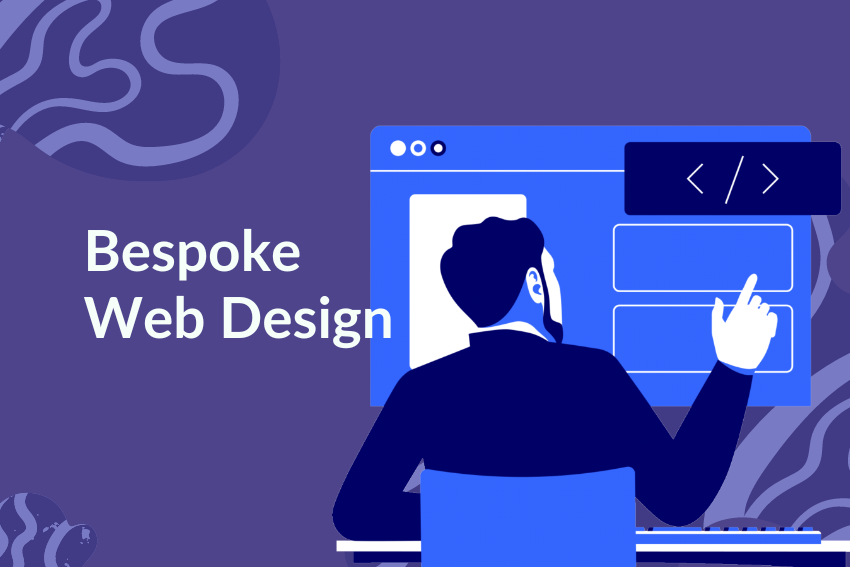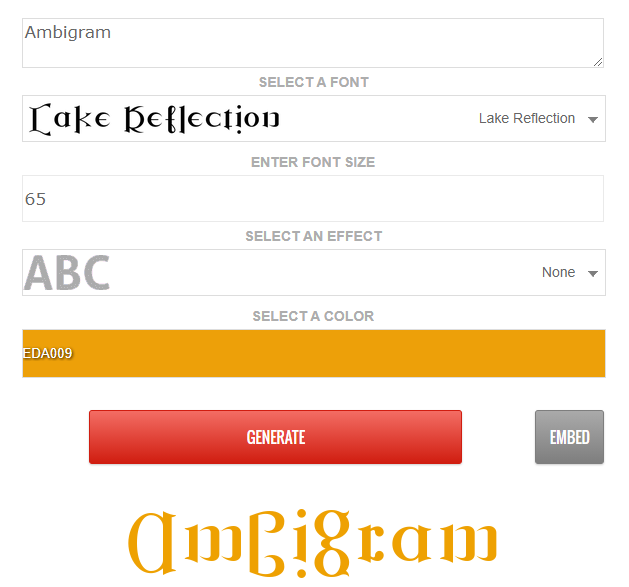Bespoke web design means making websites from scratch because such websites are made to fit the needs of a particular company or organization. While template-based sites have very little room for adjustment since they are produced in large quantities, bespoke sites are designed to order and with the client in mind and their brand image.

In this article, you will learn what bespoke web design is, some advantages of bespoke web design, some phases that characterize the bespoke design process, and some guidelines to follow when selecting a bespoke web design agency with whom you want to engage.
What is Bespoke Web Design?
Bespoke web design as the name suggests is the process of designing a website that will meet the needs of one individual or organization. The word ‘bespoke’, loosely translated, derives from the field of clothing — where clothes are tailor-made for a particular client and not mass-produced. Similarly to this, bespoke web design is custom-made and unique to each client, designed from scratch to meet their specific requirements.
Template-based web design offers sets of layouts which can be adjusted with little changes applied, while bespoke web design is an entirely unique work. Even the stylistically simplest elements of a site layout, as well as all the components of its functionality, are created and further implemented only following the discussed goals of a client, his target audience, and further essential intentions for the use of the site.
Key Differences Between Bespoke and Template-Based Design
- Customization: Template-based sites offer limited customization, while bespoke designs offer limitless possibilities.
- Unique Branding: A bespoke website is built to reflect a brand’s unique identity, whereas template-based sites can look similar to thousands of others using the same template.
- Scalability: Bespoke websites are more flexible and scalable, allowing for future growth and changes, unlike templates that might be limited in functionality.
Key Elements of Bespoke Web Design
Bespoke web design offers more than just making the website look great. It requires the creation of a site that has the right image for your brand, is enjoyable to the targeted clientele as well as easy to manage. Here are the key elements that make a bespoke website stand out:
Unique Branding & Visual Identity
Another key aspect that makes company to get engaged in bespoke web design is to be able to build a brand that represents the organization fully. This refers to logos, color and fonts used, and graphic and other visual features that go with the image or brand. Custom web design means that you want a specific picture on a website and need all aspects to resemble and mirror the idea that you set up of that specific brand mark that the site is designed for, providing the visitor on the site with a special experience.
Custom User Experience (UX) Design
It has been established that usability is always an important aspect of any website. Bespoke web design targets the overall web development concept that means planning and building web site in a way that will enable clients to navigate through website easily. The process ensures that users can gain access to the information they are looking for and be able to interact with the website in the best way possible. This includes navigation, layouts, and specific interactions specially for the selected audience or target market.
Responsive & Mobile-Friendly Design
It is a well-known fact that in today’s world a large proportion of traffic remains mobile. A responsive web design is developed with engagement at the forefront of design in order to be visually appealing and optimized for any device. Mobile compatibility is not an add-on in custom web development solutions because it is a primary consideration, so everyone using a mobile device can have the best time possible.
Tailored Content Management System (CMS)
A bespoke web design often includes a custom-built or heavily modified content management system (CMS). This makes it convenient for business organizations to employ mainly since they are not bounded by pre-developed CMS platforms like WordPress or Joomla. A custom CMS allows you always to have more control over your content’s delivery and updating since it offers features tailored to your preference.
Optimized Performance & SEO Integration
Bespoke Web design is all about designing the sites in such a way that not only do they look good but they are also very responsive and achieve top performance. This means that the website should load quickly and should ideally be Search Engine Optimized or at least in compliance with the SEO friendly website standards. An SEO specific site is developed from the ground up, making the process of ranking on search engines a lot easier and allowing the site to organically get a lot of hits.
The Process of Creating a Bespoke Website
Building a bespoke website is a collaborative and iterative process that involves several key stages. Here’s a breakdown of what the process typically involves:
Initial Consultation & Requirement Gathering
The first thing that needs to be done when designing a bespoke website is to determine the requirements of the client and the goals he is aiming to achieve. This is a meeting where you define the business needs, audience, competitors and wished web site features. The members of the design team will draw as much information as possible to ensure that the final product created matches the client’s expectation.
Wireframes & Prototyping
When the requirements are established, the next step is coming up wire frames or a prototype of the site. Sitemap is the simplest map that shows the approximate location of the content on the site, in other words, how it will look. Prototypes are another level of mockups that provide the specifics of the design and use of the site before they are created.
Design & Development
After the wireframes and prototypes are approved, it will be the time of the design team to develop the visual design of the website. This means everything from the design of the site and the actual color that is used to the type of fonts used and other pictures. Having agreed on the design, the professionals of the development team will proceed to the website construction which involves programming of both front-line and behind-the-scenes parts to make all the processes seamless.
Testing & Iteration
After constructing the website, most of the operations of the website are tested to make sure that there are no bugs and that the website functions well with the various browsers as well as the gadgets. This includes the test for function, features and usability, among others. If there is any problem, then it is solved and the website is optimized so that it can meet the client’s expectations.
Launch & Post-Launch Support
When the testing phase is done the client has approved the site, it is then time to launch the site. The site can now be accessed by the client and employed to interact with the prospects. Most web design agencies also provide a web support service for the website in case of problems that may occur and to maintain the English Website on top form after launch.
Benefits of Bespoke Web Design
There are many reasons why businesses choose bespoke web design over template-based solutions. Here are some of the key benefits:
Flexibility and Scalability
A bespoke website offers unparalleled flexibility. It can be tailored to your unique business requirements and it can be changed overtime to adapt to increasing business needs. As your business grows you may require more functionality or simply want to add more content; this is not a problem if you are using a custom website.
Greater Control Over Functionality
With a bespoke website, you have full control over the functionality and features of your site. Whether it’s e-commerce capabilities, booking systems, or custom APIs, a bespoke site can be built to include any functionality you require. This is especially good for companies who have special or specific needs that are different to others.
Better Integration with Business Goals
A bespoke website is designed with your specific business goals in mind. This means that from the layout of the website to its functionality it was designed to assist you in meeting your goals and objectives as it may range from getting leads to making sales or creating awareness of your company.
Competitive Advantage
The fact that now every company is active in social media means that the company has to be discernible to the target audience. A bespoke website gives you a unique, professional online presence that sets you apart from competitors who rely on generic templates. A custom design not only helps your website to be easily remembered by user’s but also increase its credibility and reliability.
Potential Drawbacks
While there are many advantages to bespoke web design, it’s important to consider the potential drawbacks before making a decision:
Higher Upfront Costs
One of the biggest drawbacks of bespoke web design is the cost. A lot of money has to be spent on creating fully functional custom websites since it requires a lot of work and time. This is because they take more time and effort and you need a professional to design them. But as per the experience of many business operations, they understand the benefits far exceed first-time costs.
Longer Development Time
Bespoke websites take longer to build than template-based sites. Strictly speaking, the development of a piece of software may take several weeks or even months based on the work’s level of complexity. This can be a disadvantage especially for business people who require a website to be established soon.
Ongoing Maintenance
A bespoke website requires ongoing maintenance to ensure that it continues to function smoothly. This includes updating your operating system, fixing and applying security bugs and also enhancing the performance of the Operating system. Even though this could be an added expense, it’s very important for the proper functioning of the website.
Is Bespoke Web Design Right for You?
Deciding whether to invest in bespoke web design depends on your specific needs and objectives. Here are some factors to consider:
Business Needs
If your business has unique requirements that cannot be met by a standard template, a bespoke website is likely the best option. However, it is especially true for those businesses who require some specific functionality or extensive integration.
Budget
Bespoke web design is a significant investment, so it’s important to consider your budget. The initial costs will always be high as compared to traditional templates but this is offset by the advantages such as improved performance, easiness in scaling and the fact that it will make the web developing team’s design unique.
Long-Term Goals
If you’re looking for a website that will grow with your business and provide a solid foundation for future expansion, a bespoke website is a smart choice. The option of an individual web site can be expanded and altered to include new options and materials as the company changes.
Conclusion
Bespoke web design offers a tailored solution for businesses looking to create a unique, high-performing website that aligns with their brand and objectives. While the use of custom design and programming means more time and money will be spent on it as compared to the use of templates for sites and therefore, there are disadvantages to this approach, the advantages this way has over the use of templates such as flexibility, scalability and a better means to fuse with business objectives make this a more suitable option for many companies.
By investing in a bespoke website, you gain greater control over your online presence, enhance your brand identity, and provide a better user experience for your visitors. Whether you’re a small business looking to grow or a larger organization in need of a more sophisticated website, bespoke web design can help you achieve your goals and stand out in the digital world.






